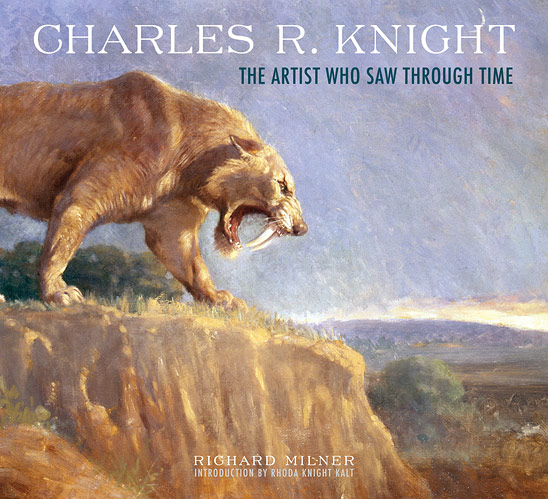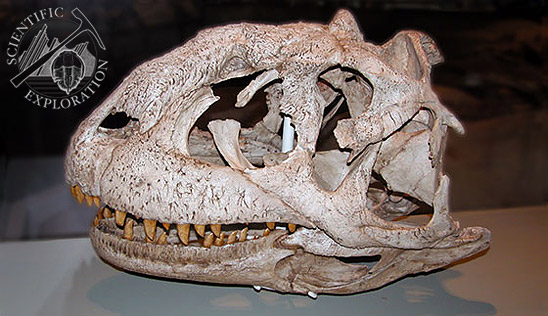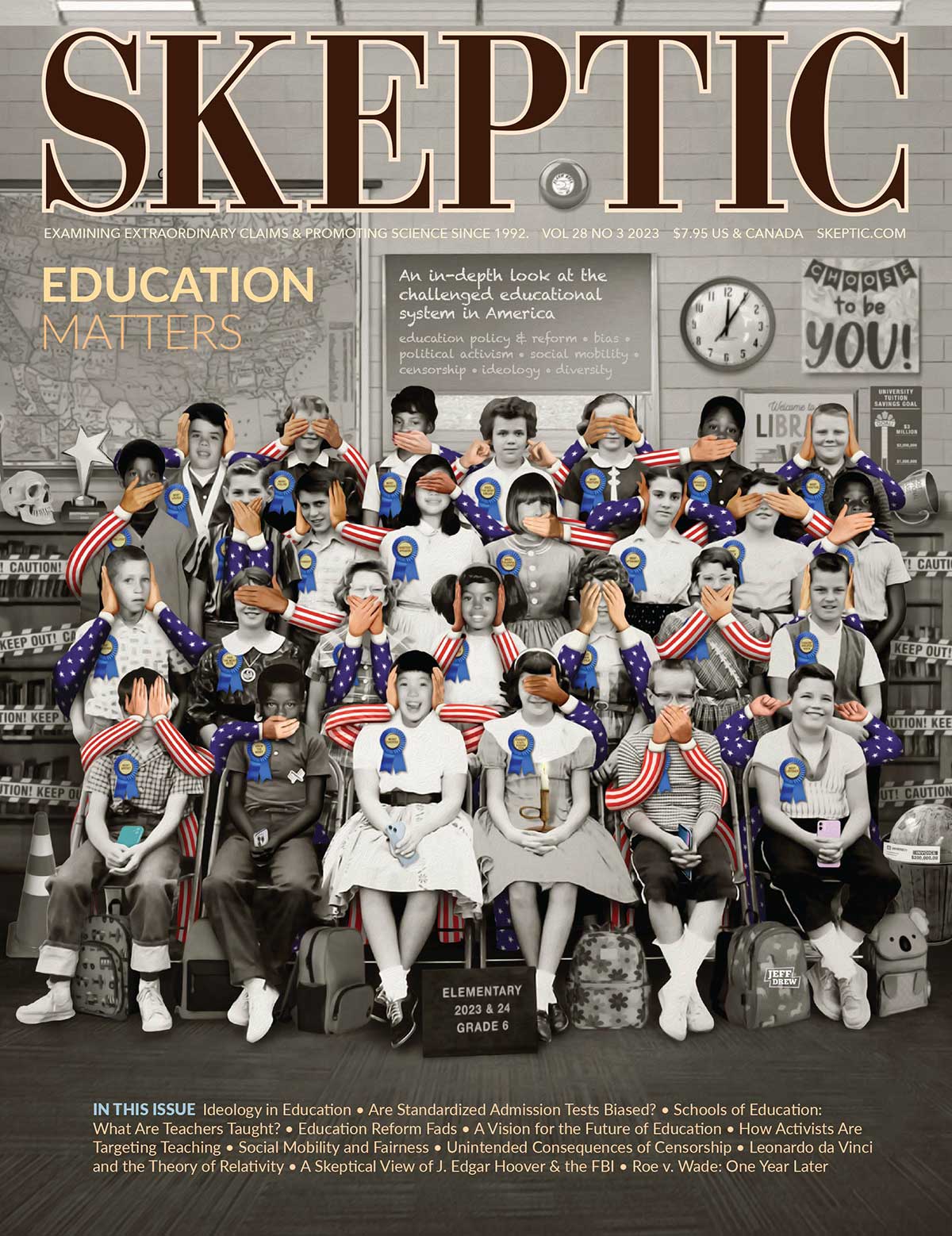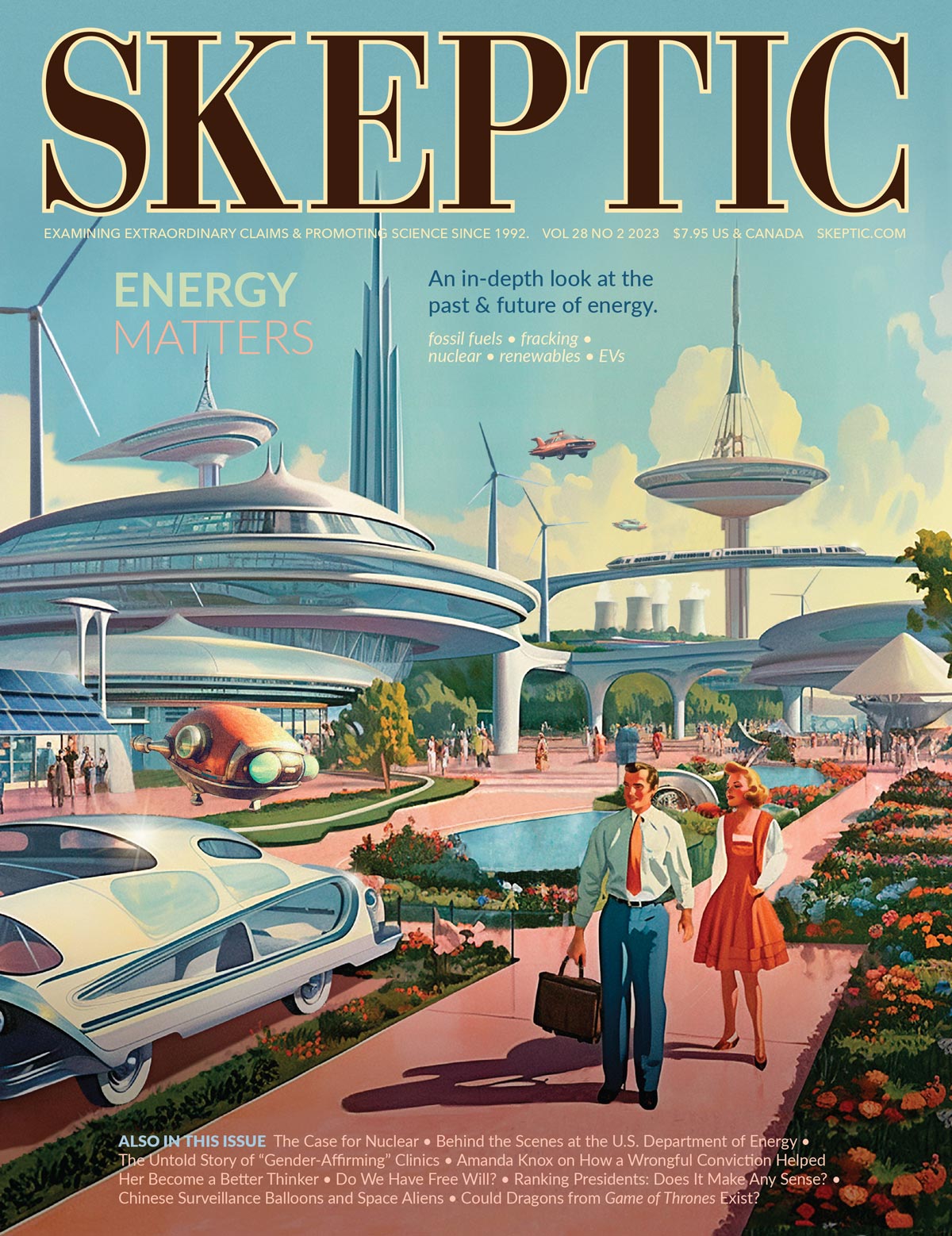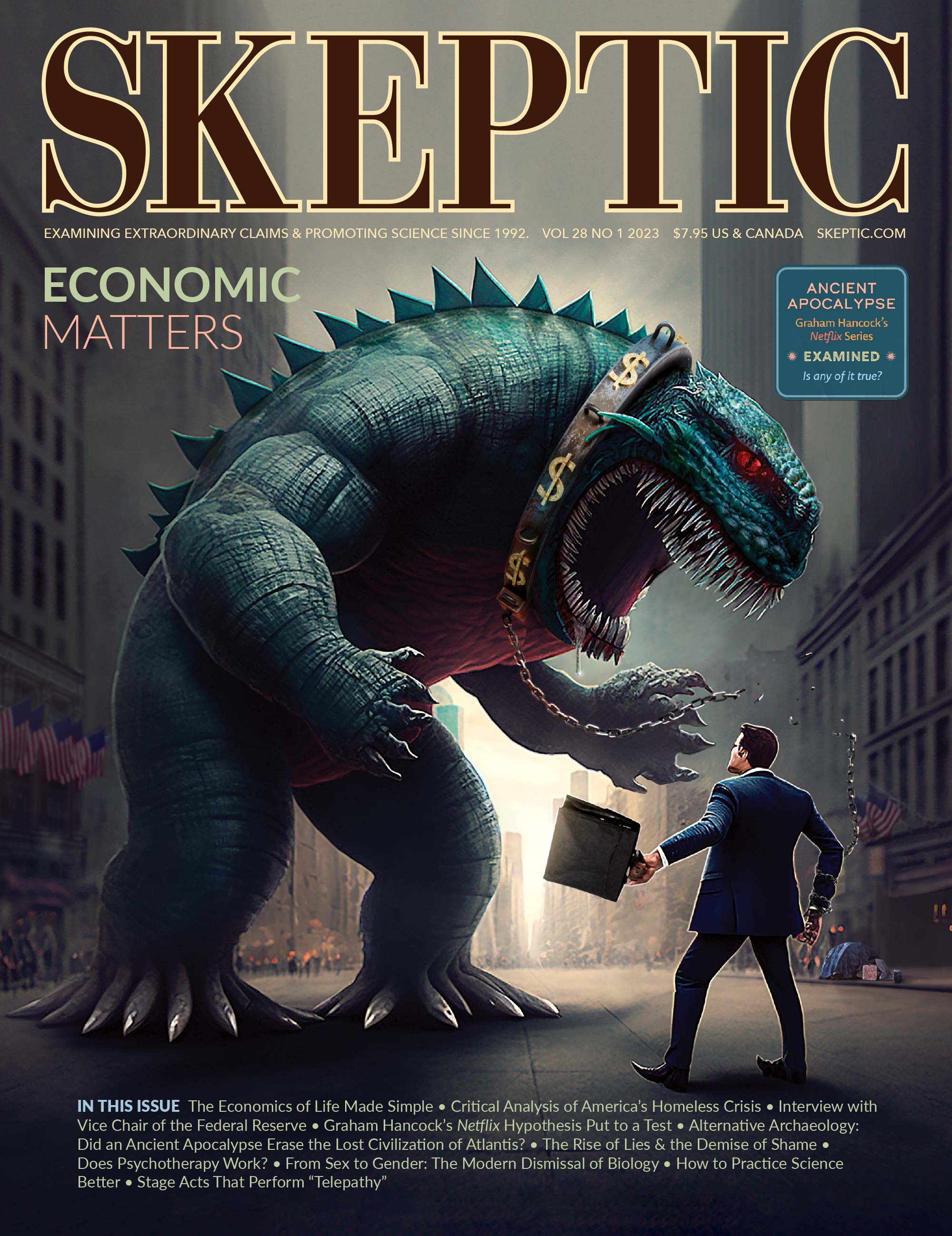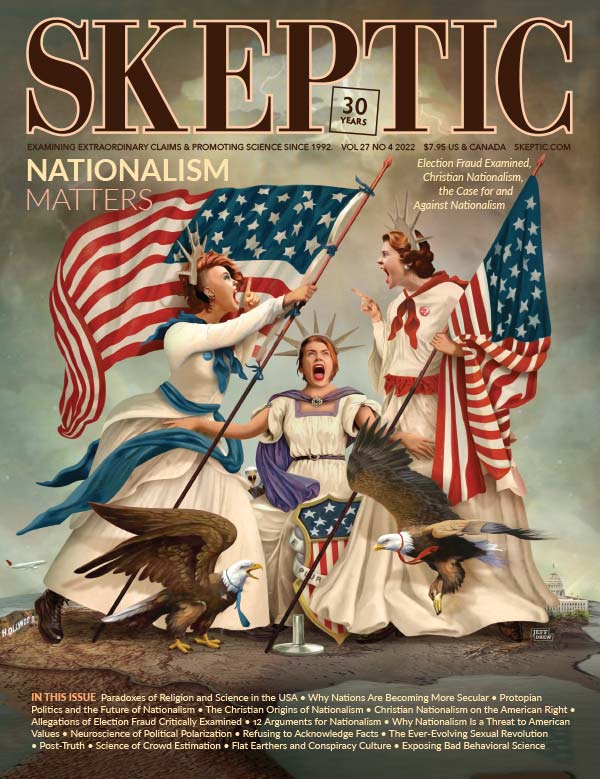In this week’s eSkeptic:
About this week’s eSkeptic
In this week’s eSkeptic, Donald R. Prothero reviews Richard Milner’s new book, Charles R. Knight: The Artist Who Saw Through Time (Order the book from Amazon). The review copy of this book was so popular in the Skeptics Society office that everyone wanted it! (All images below are protected by copyright and used with permission.)
The Father of “Jurassic Park”
a book review by Donald R. Prothero
Anywhere you go in modern society, dinosaurs are ubiquitous. From the movies to TV to the internet to toy stores and museum gift shops, there are countless chances to spend money on dinosaur paraphernalia. The three Jurassic Park movies were among the top grossing movies of all time. For kids between the ages of 2 and 12, dinosaurs are often a major part of their imaginations. Many kids are hugely fascinated with them, and have learned to master their polysyllabic names to the amazement of their parents. (I was one of those kids, hooked on dinosaurs at age 4. I wanted to become a paleontologist as soon as I knew what the word meant. Back in the late 1950s–early 1960s when I grew up, this was highly unusual; kids back then didn’t care much for dinosaurs compared to today’s kids). Most kids change their interests as puberty hits and they enter the “tweens” and teen years, but the fascination with dinosaurs never completely disappears.
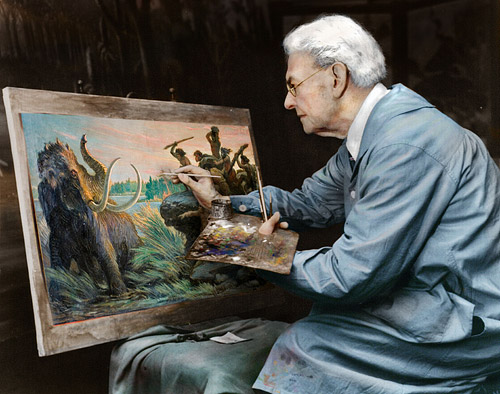
Charles R. Knight in a 1935 publicity photo for his book Before the Dawn of History.
Colorized by Viktor Deak. © Richard Milner. (Click image to enlarge)
We can’t imagine a world where this is not true, but in fact it is a relatively recent phenomenon, just a century old. More than any other person, the public fascination and interest in prehistoric creatures owes its existence to one man, Charles R. Knight. Prior to Knight’s “reconstructive” illustrations of a wide range of extinct animals, there was almost no public awareness of them.
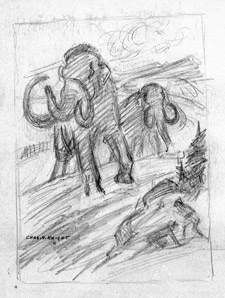
Rough sketch suggests one of Knight’s favorite themes: the puny but clever humans taking on impossibly huge prey, such as these woolly mammoths. © Rhoda Knight Kalt.
(Click image to enlarge)
The earliest discoveries of dinosaurs in Britain in the 1830s and 1840s were just fragmentary bones, and by the 1860s they had been depicted as giant lizards by the British artist Waterhouse Hawkins. In the U.S., the early discoveries by Joseph Leidy, O. C. Marsh, and Edward Drinker Cope were also quite fragmentary, and illustrated only in technical monographs that the general public could not obtain. There were almost no museums displaying large mounted skeletons of dinosaurs until Henry Fairfield Osborn of the American Museum of Natural History in New York did so in the early 1900s. Osborn’s museum crews obtained nearly complete skeletons of some of the most famous dinosaurs: sauropods like “Brontosaurus” (now Apatosaurus) and the first skeletons of Tyrannosaurus rex and Triceratops. Osborn realized the publicity value of spectacular dinosaur skeletons for his growing museum, and so these mounts were the forerunners of the many displays in museums worldwide. But mounted skeletons were not enough. Osborn realized that the “dry bones” did not speak to the public so clearly without a good reconstruction to help the layperson visualize them. And fortunately for paleontology and history, he discovered the gifted young Charles R. Knight hanging out with the taxidermists at his museum.
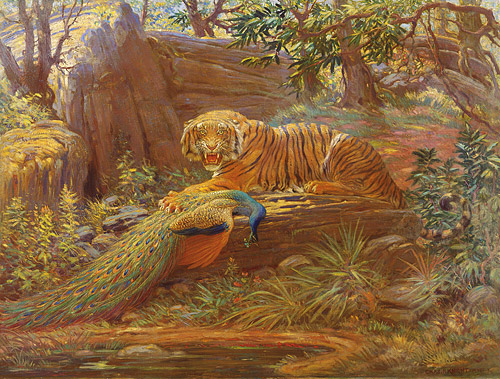
Knight’s favorite painting, the tiger and peacock, which he refused to part with during his lifetime, is now being offered by an art gallery. © Rhoda Knight Kalt. (Click image to enlarge)
As this outstanding book by historian of science Richard Milner describes it, Knight was born in Brooklyn in 1874, three years after Darwin published The Descent of Man. This was a period of groundbreaking discoveries in biology and paleontology, and young Charles was fascinated with animals as a toddler. One day he told his father he was tired of stories about Jesus, and wanted to hear stories about elephants! He began doing sketches of the animals in his books, even though he lived in urban Brooklyn with few exotic animals to study. Eventually, naturalists such as Osborn, Theodore Roosevelt, and the wealthy “sportsmen” of the Boone and Crockett Club established the Bronx Zoo. Here, Knight got his first chance to practice his burgeoning art skills on drawing animals from all over the world. Unfortunately, when Charles was 6, he was struck by a pebble thrown by another boy, and it damaged his right eye. He had to use his myopic and astigmatic left eye for the rest of his life, and somehow managed to produce his greatest work during his later years when he was legally blind!
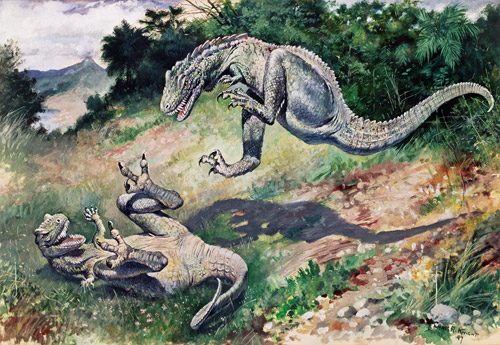
Knight’s fast-moving, acrobatic Dryptosaurs do battle, in this classic 1897 painting known to dino buffs as “Leaping Laelops.” © AMNH. (Click image to enlarge)
Charles’s father was a secretary to J.P. Morgan, powerful baron of industry and treasurer of the American Museum, and it was through this connection that young Knight gained access to the taxidermy and paleontology workshops. The new head of the museum’s paleontology department, Henry Fairfield Osborn, immediately recognized his talents, and by 1896 was commissioning him to do nearly all the painting and restorations of prehistoric beasts that their expeditions had discovered. Although heavily committed to work for the American Museum for more than 40 years, he refused Osborn’s entreaties to join its staff, and stubbornly kept his independence. Knight continued to do a wide variety of free-lance illustrations for magazines, and remarkable sculptures, paintings, and drawings of wild animals, many based on the creatures at the Bronx Zoo. Having refused a secure staff position at the American Museum, he was nearly always broke and in debt. His traditional, realistic style of painting wildlife was hard to sell in the midst of the wave of new artists from Europe (Picasso, Gauguin, Matisse, Duchamp, and others), so he rarely got commissions from wealthy patrons to keep him financially secure. He was always forgetful about money, walking away from store counters without his change, and did not know how to manage his finances. As his ties to the American Museum weakened over money issues, he eventually received commissions to do grand murals for the Field Museum in Chicago and a series of paintings for the Natural History Museum of Los Angeles. By the time these murals were commissioned, Knight was legally blind, and had to employ assistants to render his small sketches into wall-sized paintings that Knight could see only as a blur. Late in life, he always carried a piece of paper with his address, so if he became lost due to his blindness, someone could help him get home. After he had completely lost his sight, Knight’s health began to deteriorate, and he died in 1953, at the age of 79.
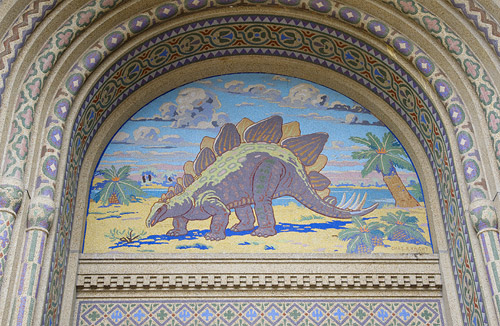
This Stegosaurus Arch, rendered by Knight in shades of colored cement, guards the Reptile House entrance at the Smithsonian’s National Zoo in Washington DC. © Smithsonian National Zoo, Jesse Cohen. (Click image to enlarge)
But Milner’s book is more than just a biography of a pioneering paleoartist. It is gloriously illustrated with Knight’s art, rendered in full color on quality paper stock by Abrams, a noted publisher of art books, so the colors just pop out of the page. (Milner is credited as the art editor of the book as well as the author.) Many of the sketches were previously unpublished, and show the artist’s early ideas for works that later become iconic. Others are truly remarkable, such as the guest book pages from Henry Fairfield Osborn’s mansion, signed by J.P. Morgan and other powerful people—with prehistoric animal doodles by Knight. Milner’s book has chapters on the Bronx Zoo and Knight’s connection with its early history, including his amazing sculptures for its elephant house; on how Knight’s art helped to save the bison from extinction; Knight’s sketches showing animals dissected down to their muscles, which helped make Knight’s creations more realistic and life-like; pages and pages of gorgeous paintings of the great cats and exotic birds; descriptions of how Knight prepared sketches and anatomical drawings before he painted, and how he fleshed out mounted skeletons of extinct beasts into amazing miniature sculptures; his role in creating Sinclair Oil’s “Dinoland” for the 1964 New York World’s Fair; and his trip to Europe to study early Paleolithic cave paintings and connect with the Ice Age artists who made them. The book also includes an Introduction by Knight’s granddaughter, Rhoda Knight Kalt, with her charming childhood recollections of her grandfather.
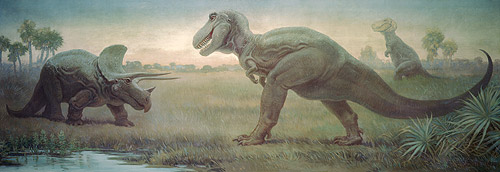
Recently restored Field Museum mural depicting the iconic confrontation between a Triceratops and a T. rex. Knight’s famous dinosaurian faceoff has been copied in countless movies, toys, and comic books. © Field Museum. (Click image to enlarge)
Inevitably in a project as large and complex as this, a few small errors creep in—mostly the spelling of one or two scientific names in captions (such as Protoceras and Megaceros on p. 66). However, Milner was conscientious in making sure that the captions reflect the most current scientific names and interpretations of these extinct creatures. More importantly, the high-quality reproduction of the art and the many previously unpublished sketches and doodles give us an unprecedented insight into Knight’s artistic techniques and his love of his animal subjects. Milner shows how Knight’s conception of prehistoric animals changed over time as the scientific ideas changed, so he rendered the great sauropods as both sluggish tail-dragging lizard-like creatures in swamps (the view a century ago) and also as animals of the dry land with necks and tails held out straight (the modern view). He rendered a famous painting inspired by the insights of the ailing Edward Drinker Cope that showed the modern conception of the predatory Allosaurus (then called Laelaps) jumping on another in a very active pose, a view which has come back into scientific favor a century later. At Osborn’s urging, Knight had spent weeks absorbing Cope’s expertise shortly before the pioneering paleontologist died in 1897.
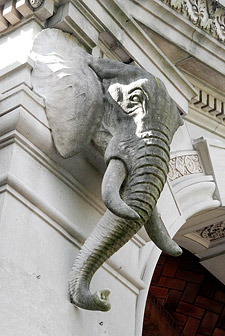
An African elephant head, one of a pair of Knight sculptures that flank the portal of the Bronz Zoo’s Elephant House, completed in 1906. Photo by Viktor Deak. © Richard Milner.
(Click image to enlarge)
In 1934, Osborn wrote, “Charles R. Knight is the greatest genius in the line of prehistoric restoration that the science of paleontology has ever known. His work in the American Museum will endure for all time.” Stephen Jay Gould pointed out that although Knight never published a single scholarly work in paleontology, he was more influential in shaping our ideas about the prehistoric world than any scientist. More to the point, Knight is the source of nearly all modern paleoart, revered by all modern dinosaur artists and Hollywood dinosaur animators as their founding father. Even though he was nearly blind, without his visualization of prehistoric creatures our modern obsession with dinosaurs might never have occurred, or followed the path that it did. The world of extinct animals that seems so familiar to us is largely Knight’s vision, and we can be thankful for his amazing skills, passion, and dedication in making the prehistoric past come alive.
About the Author of this Review
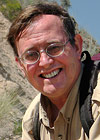
DR. DONALD R. PROTHERO was Professor of Geology at Occidental College in Los Angeles, and Lecturer in Geobiology at the California Institute of Technology in Pasadena. He earned M.A., M.Phil., and Ph.D. degrees in geological sciences from Columbia University in 1982, and a B.A. in geology and biology (highest honors, Phi Beta Kappa) from the University of California, Riverside. He is currently the author, co-author, editor, or co-editor of 32 books and over 250 scientific papers, including five leading geology textbooks and five trade books as well as edited symposium volumes and other technical works. He is on the editorial board of Skeptic magazine, and in the past has served as an associate or technical editor for Geology, Paleobiology and Journal of Paleontology. He is a Fellow of the Geological Society of America, the Paleontological Society, and the Linnaean Society of London, and has also received fellowships from the Guggenheim Foundation and the National Science Foundation. He has served as the President and Vice President of the Pacific Section of SEPM (Society of Sedimentary Geology), and five years as the Program Chair for the Society of Vertebrate Paleontology. In 1991, he received the Schuchert Award of the Paleontological Society for the outstanding paleontologist under the age of 40. He has also been featured on several television documentaries, including episodes of Paleoworld (BBC), Prehistoric Monsters Revealed (History Channel), Entelodon and Hyaenodon (National Geographic Channel) and Walking with Prehistoric Beasts (BBC). His website is: www.donaldprothero.com. Check out Donald Prothero’s page at Shop Skeptic.
Be Among the First to Hear About
Skeptics Society Geology Tours!
Led by paleontologist/geologist Dr. Donald R. Prothero, our often multi-day excursions tour some of the best geologic wonders in the United States. Visit some of the richest dinosaur-bearing deposits in the world, and collect amazing trilobites. Decipher the geologic story behind the amazing scenery at Zion, Bryce, and Capitol Reef National Parks, Death Valley, Kelso Dunes, the Great Basin, Redrock Canyon and more. Read about our past geology tours and sign up for advance notification about our next tour!

NEW ON MICHAELSHERMER.COM
Another Fatal Conceit
In this review of The Darwin Economy: Liberty, Competition, and the Common Good by Robert H. Frank, Michael Shermer discusses a lesson from evolutionary economics regarding bottom-up self-organization rather than top-down government design. This review appeared online in the Journal of Bioeconomics in March 2012.
NEW ON HUFFINGTONPOST.COM
Debate: Are Science and Religion Incompatible?
Do you believe in God? Or do you put your faith in science? Kenneth Miller faces off against Michael Shermer at HuffingtonPost.com in this hot-button debate about the compatibility of science and religion. Vote on the debate in the pre-debate poll and then afterward again to see who changed the most minds!


SKEPTICALITY EPISODE 178
You Are Not So Smart
This week on Skepticality, Derek has a discussion with David McRainy about his latest book, You Are Not So Smart. McRainy is a journalist who mainly covers subject matter in the areas of psychology and technology, which lead him to researching many of the claims to which skeptics gravitate. In this interview, you’ll find out why you probably have too many friends on Facebook, why your memory is mostly fiction, and other ways in which you are probably deluding yourself.
Lecture this Monday at Caltech

Revelations: Visions, Prophecy, and Politics in the Book of Revelation
with Dr. Elaine Pagels
Monday, March 19, 2012 at 7:30 pm
Baxter Lecture Hall
A STARTLING EXPLORATION of the history of the most controversial book of the Bible, the religious scholar Elaine Pagels tackles The Book of Revelation, the surreal apocalyptic vision of the end of the world…or is it? Pagels returns The Book of Revelation to its historical origin, written as its author John of Patmos took aim at the Roman Empire after what is now known as “the Jewish War,” in 66 CE. Militant Jews in Jerusalem, fired with religious fervor, waged an all-out war against Rome’s occupation of Judea and their defeat resulted in the desecration of Jerusalem and its Great Temple. Pagels persuasively interprets Revelation as a scathing attack on the decadence of Rome. Soon after, however, a new sect known as “Christians” seized on John’s text as a weapon against heresy and infidels of all kinds—Jews, even Christians who dissented from their increasingly rigid doctrines and hierarchies. In a time when global religious violence surges, Revelations explores how often those in power throughout history have sought to force “God’s enemies” to submit or be killed.
Tickets are first come, first served at the door. Seating is limited. $8 for Skeptics Society members and the JPL/Caltech community, $10 for nonmembers. Your admission fee is a donation that pays for our lecture expenses.
Followed by Two Events on the Same Day
for the Price of One!
Sunday, March 25, 2012 at 2 pm
A Great Debate: “Has Science Refuted Religion?”
with Sean Carroll & Michael Shermer v. Dinesh D’Souza & Ian Hutchinson
Sam Harris on Free Will
This lecture will begin after the debate ends.
This Debate/Harris lecture is now SOLD OUT.
TICKETS: $10 Skeptics Society members/Caltech/JPL community; $15 everyone else. Tickets may be purchased in advance through the Caltech ticket office at 626-395-4652 or at the door. Ordering tickets ahead of time is strongly recommended. The Caltech ticket office asks that you do not leave a message. Instead call between 12:00 and 5:00 Monday through Friday.


